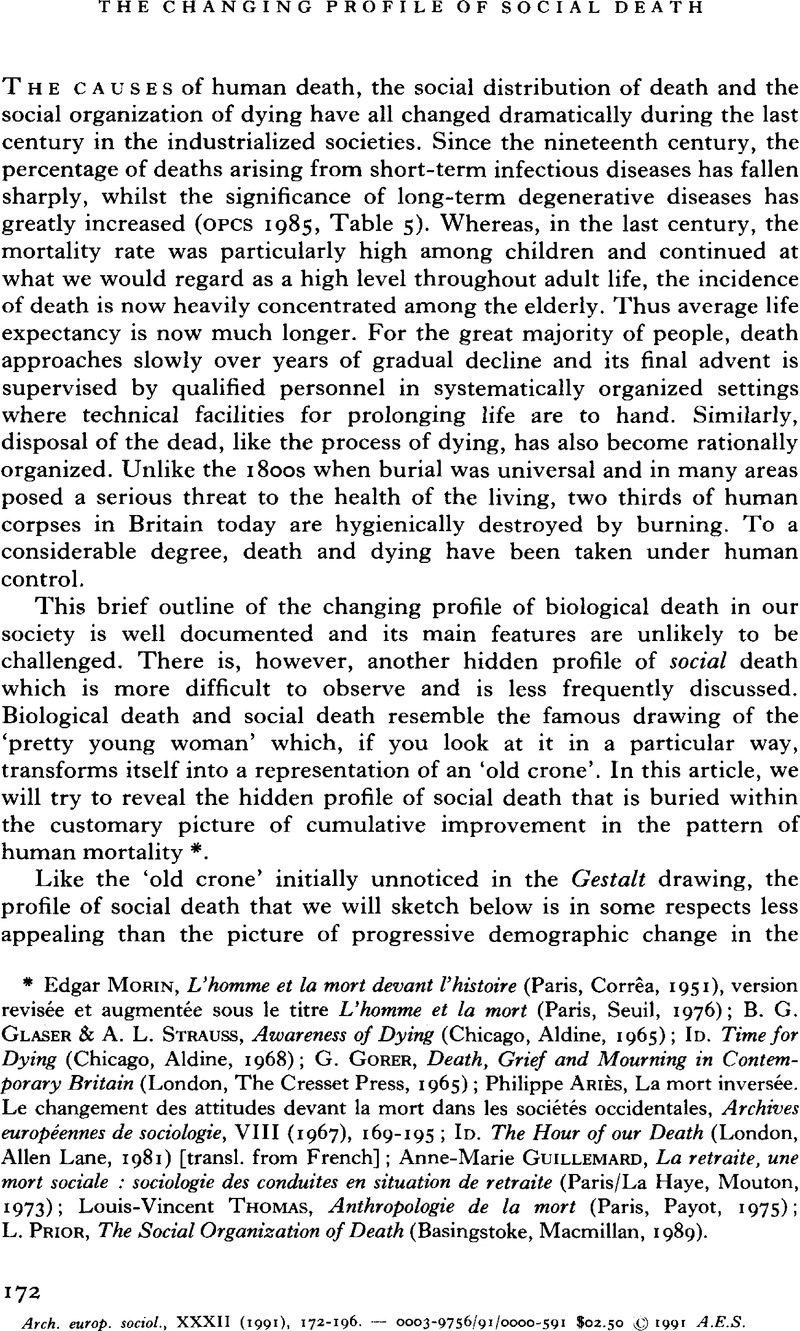Crossref Citations
This article has been cited by the following publications. This list is generated based on data provided by Crossref.
Mulkay, Michael
1992.
Social Death in Britain.
The Sociological Review,
Vol. 40,
Issue. 1_suppl,
p.
31.
Walter, Tony
1992.
Sociologists Never Die: British Sociology and Death.
The Sociological Review,
Vol. 40,
Issue. 1_suppl,
p.
264.
McNamara, Beverley
Waddell, Charles
and
Colvin, Margaret
1995.
Threats to the good death: the cultural context of stress and coping among hospice nurses.
Sociology of Health & Illness,
Vol. 17,
Issue. 2,
p.
222.
Seale, Clive
and
Addington-Hall, Julia
1995.
Dying at the best time.
Social Science & Medicine,
Vol. 40,
Issue. 5,
p.
589.
Timmermans, Stefan
1998.
Social Death as Self-Fulfilling Prophecy: David Sudnow's Passing On Revisited.
The Sociological Quarterly,
Vol. 39,
Issue. 3,
p.
453.
Exley, Catherine
1999.
Testaments and memories: Negotiating after-death identities.
Mortality,
Vol. 4,
Issue. 3,
p.
249.
Timmermans, Stefan
1999.
When Death Isn't Dead: Implicit Social Rationing during Resuscitative Efforts.
Sociological Inquiry,
Vol. 69,
Issue. 1,
p.
51.
Howarth, Glennys
2000.
Dismantling the boundaries between life and death.
Mortality,
Vol. 5,
Issue. 2,
p.
127.
Gwilliam, Bridget
and
Bailey, Christopher
2001.
The nature of terminal malignant bowel obstruction and its impact on patients with advanced cancer.
International Journal of Palliative Nursing,
Vol. 7,
Issue. 10,
p.
474.
BAILEY, C.
and
CORNER, J.
2003.
Care and the older person with cancer.
European Journal of Cancer Care,
Vol. 12,
Issue. 2,
p.
176.
Bevan, Denise
and
Thompson, Neil
2003.
The Social Basis of Loss and Grief.
Journal of Social Work,
Vol. 3,
Issue. 2,
p.
179.
Castra, Michel
2003.
Bien mourir.
p.
357.
Haddow, Gillian
2005.
The phenomenology of death, embodiment and organ transplantation.
Sociology of Health & Illness,
Vol. 27,
Issue. 1,
p.
92.
Froggatt, Katherine
2005.
‘Choice over care at the end of life’.
Journal of Research in Nursing,
Vol. 10,
Issue. 2,
p.
189.
Valentine, Christine
2007.
The “Moment of Death”.
OMEGA - Journal of Death and Dying,
Vol. 55,
Issue. 3,
p.
219.
Meyer, Morgan
and
Woodthorpe, Kate
2008.
The Material Presence of Absence: A Dialogue between Museums and Cemeteries.
Sociological Research Online,
Vol. 13,
Issue. 5,
p.
127.
Froggatt, Katherine
Hockley, Jo
Parker, Deborah
and
Brazil, Kevin
2011.
A system lifeworld perspective on dying in long term care settings for older people: Contested states in contested places.
Health & Place,
Vol. 17,
Issue. 1,
p.
263.
Walter, Tony
Hourizi, Rachid
Moncur, Wendy
and
Pitsillides, Stacey
2012.
Does the Internet Change How We Die and Mourn? Overview and Analysis.
OMEGA - Journal of Death and Dying,
Vol. 64,
Issue. 4,
p.
275.
Carlos Nogueira
2012.
Death in Portuguese Literature for Children and Young People.
Portuguese Studies,
Vol. 28,
Issue. 1,
p.
94.
Walter, Tony
2014.
Organizations and death – a view from death studies.
Culture and Organization,
Vol. 20,
Issue. 1,
p.
68.



